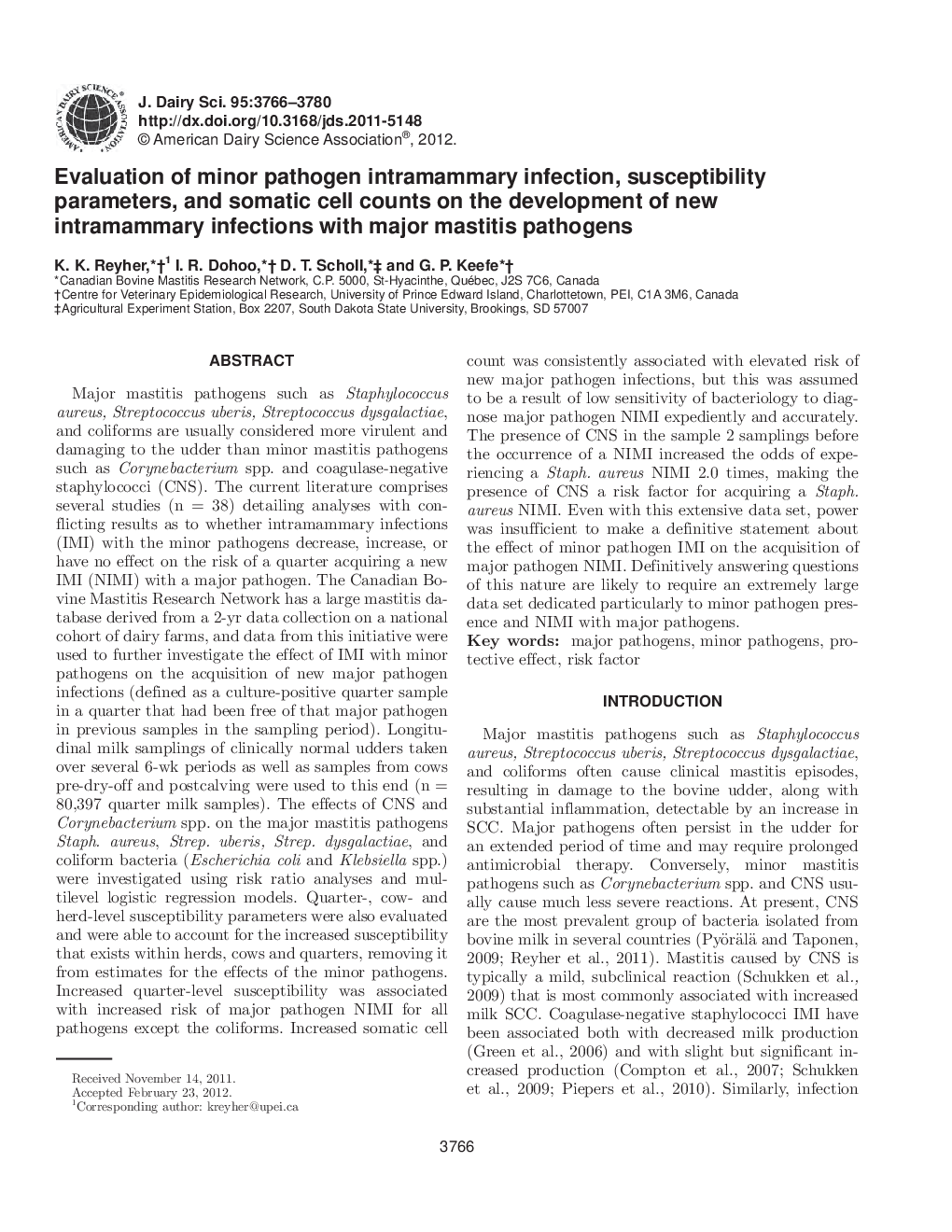| Article ID | Journal | Published Year | Pages | File Type |
|---|---|---|---|---|
| 10979705 | Journal of Dairy Science | 2012 | 15 Pages |
Abstract
Major mastitis pathogens such as Staphylococcus aureus, Streptococcus uberis, Streptococcus dysgalactiae, and coliforms are usually considered more virulent and damaging to the udder than minor mastitis pathogens such as Corynebacterium spp. and coagulase-negative staphylococci (CNS). The current literature comprises several studies (n = 38) detailing analyses with conflicting results as to whether intramammary infections (IMI) with the minor pathogens decrease, increase, or have no effect on the risk of a quarter acquiring a new IMI (NIMI) with a major pathogen. The Canadian Bovine Mastitis Research Network has a large mastitis database derived from a 2-yr data collection on a national cohort of dairy farms, and data from this initiative were used to further investigate the effect of IMI with minor pathogens on the acquisition of new major pathogen infections (defined as a culture-positive quarter sample in a quarter that had been free of that major pathogen in previous samples in the sampling period). Longitudinal milk samplings of clinically normal udders taken over several 6-wk periods as well as samples from cows pre-dry-off and postcalving were used to this end (n = 80,397 quarter milk samples). The effects of CNS and Corynebacterium spp. on the major mastitis pathogens Staph. aureus, Strep. uberis, Strep. dysgalactiae, and coliform bacteria (Escherichia coli and Klebsiella spp.) were investigated using risk ratio analyses and multilevel logistic regression models. Quarter-, cow- and herd-level susceptibility parameters were also evaluated and were able to account for the increased susceptibility that exists within herds, cows and quarters, removing it from estimates for the effects of the minor pathogens. Increased quarter-level susceptibility was associated with increased risk of major pathogen NIMI for all pathogens except the coliforms. Increased somatic cell count was consistently associated with elevated risk of new major pathogen infections, but this was assumed to be a result of low sensitivity of bacteriology to diagnose major pathogen NIMI expediently and accurately. The presence of CNS in the sample 2 samplings before the occurrence of a NIMI increased the odds of experiencing a Staph. aureus NIMI 2.0 times, making the presence of CNS a risk factor for acquiring a Staph. aureus NIMI. Even with this extensive data set, power was insufficient to make a definitive statement about the effect of minor pathogen IMI on the acquisition of major pathogen NIMI. Definitively answering questions of this nature are likely to require an extremely large data set dedicated particularly to minor pathogen presence and NIMI with major pathogens.
Keywords
Related Topics
Life Sciences
Agricultural and Biological Sciences
Animal Science and Zoology
Authors
K.K. Reyher, I.R. Dohoo, D.T. Scholl, G.P. Keefe,
